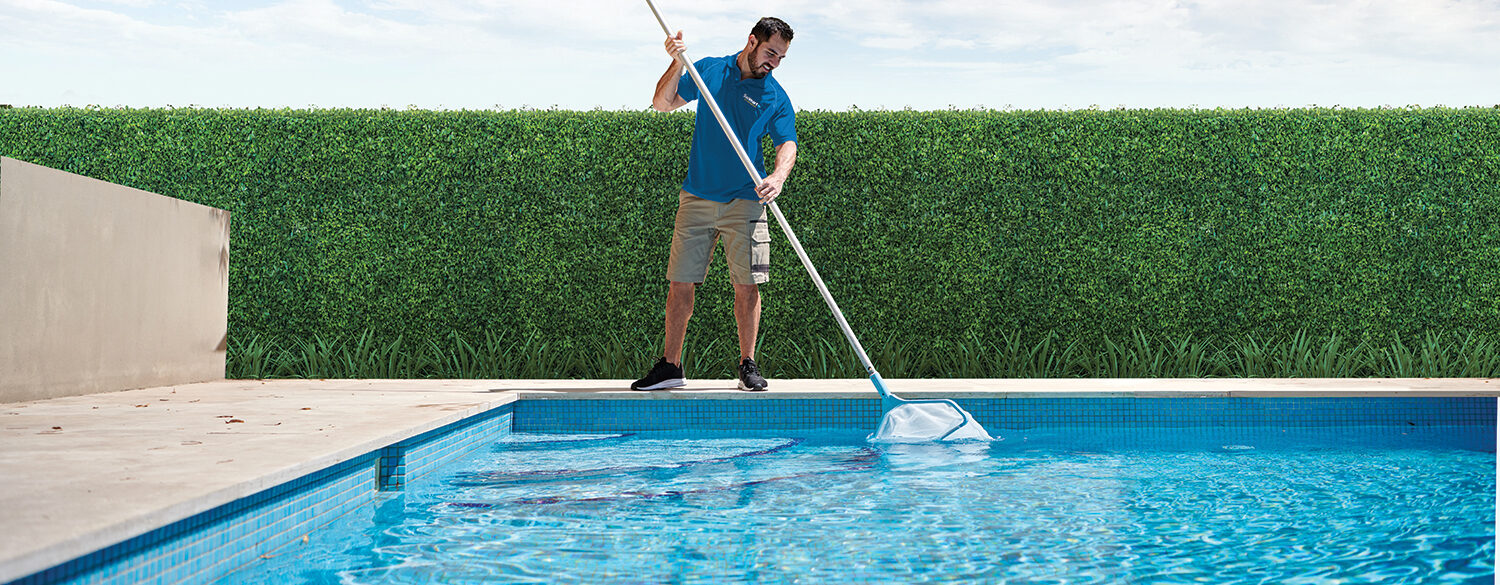DIY Tips
Attacking scale and stain
11 April 2012
Keeping your pool in pristine condition requires the precise balancing of various elements. When not properly maintained, scale and stains can develop and become a problem. However, never fear – Swimart has some handy hints on how to rid your pool of this pesky nuisance.
Attacking scale and stain
Simple solutions for annoying problems
What is scale?
Scale appears as white, calcified deposits. It is created by excessive calcium and unbalanced water chemistry - typically either high pH, alkalinity, hardness, or a combination of any of the three. High pH and/or the total alkalinity cause an increase in the amount of carbonate ions. This combination creates calcium carbonate, which is more commonly known as a scale.
Scale is obviously unattractive on pool walls and floor, but it can become a real problem if it builds up in the plumbing, restricting water circulation and filtration, or if it builds up on equipment, causing equipment failure and the premature need to replace equipment.
If scale occurs, you must test and adjust the water chemistry. Then, once water chemistry is within its correct range, a metal sequestering agent designed for calcium should be added to the water to remove the scale.
A metal sequestering agent is a substance that removes metal ion from a solution by forming a complex ion that binds to the metal and prevents it from depositing as scales or stains. As it slowly breaks down in the pool, you will need to keep regularly adding more to maintain the correct water balance.
What is a stain?
Typically stains result from unwanted water contaminants such as metals (i.e. iron, copper and manganese), which find their way into pool water via:
- Water used to top up or initially fill up a swimming pool.
- Salt added to a salt water pool
- Liquid chlorine
- Algaecides containing metals
- Black spots in fibreglass
- Leaves from algae
- Oxidation
- Scale
STAIN AND SCALE
Metal stains most commonly appear shortly after the pH is raised or when you add chlorine. Fibreglass pools are particularly prone to metal stains. Organic stains can sometimes look similar to metal stains, but are usually left by algae or leaves that sit in the pool for awhile, leaving a stain behind when cleaned up.
Metals can colour the water with a variety of colours, typically green, blue or yellow. When this happens the water will still be very clear and transparent. If the water is cloudy or murky it is very unlikely to have anything to do with metals in the water. If the colouring is from metals, lowering the pH slightly and adding metal sequestering agent should remove the colour.
Consult your Swimart specialist for more information about how to use these and other products within the Aqua-Health range.


 AUS
AUS NZ
NZ 


